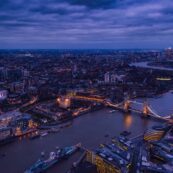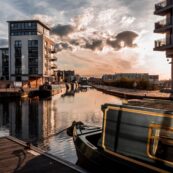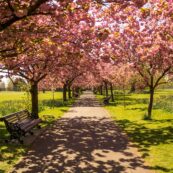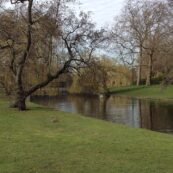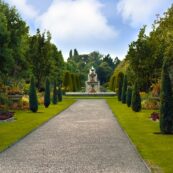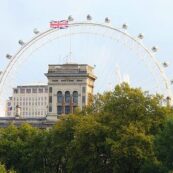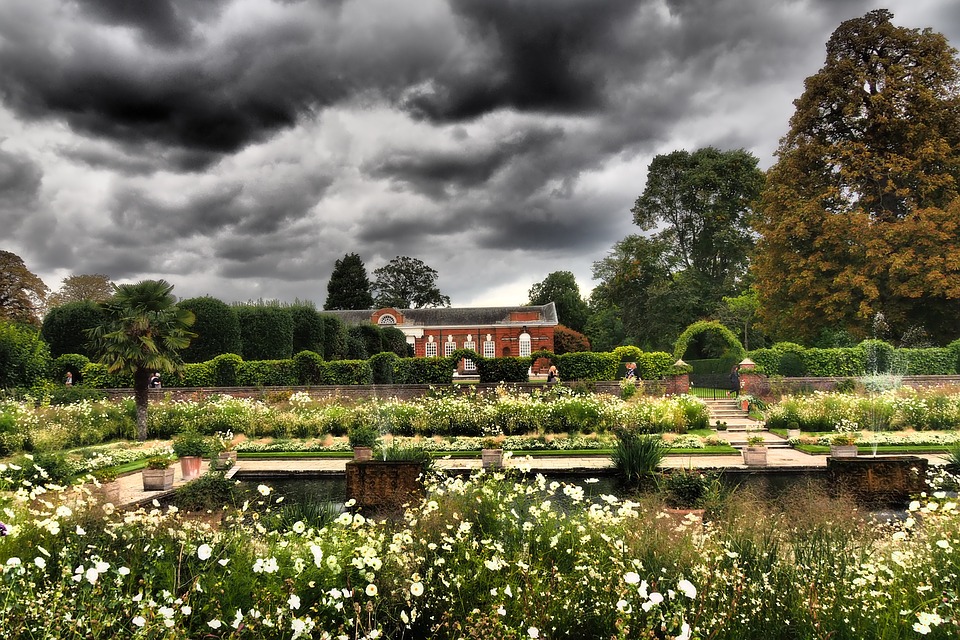
Kensington Gardens
Kensington Gardens is a large park complex, which harmoniously combines the nature of wildlife (elms, oaks and plane trees dominate here) with architectural buildings (greenhouse-restaurant, Prince Albert Memorial, Princess Diana playground, Serpentine Gallery, Princess Caroline Temple, Peter Pan Statue, John Speke Monument). Next door to Kensington Gardens is Hyde Park, separated by an artificial lake.
The gardens date back to the late 17th century when part of the royal deer hunting reserve, which was at one time Hyde Park, was bought by King William III (1650-1702) together with Nottingham House, later rebuilt into Kensington Palace. The king wanted an atmosphere around his home that was good for his ailing lungs and, to please him, Queen Mary commissioned a Dutch-style garden (William was of the Dutch lineage of Princes of Orange). However, the Dutch style didn’t last long, because at the beginning of the XVIII century the area of Kensington Gardens was enlarged by part of Hyde Park and was re-equipped in the English park style. A greenhouse appears in the gardens, and soon the area is again expanded by 300 acres and becomes equal to 111 hectares.
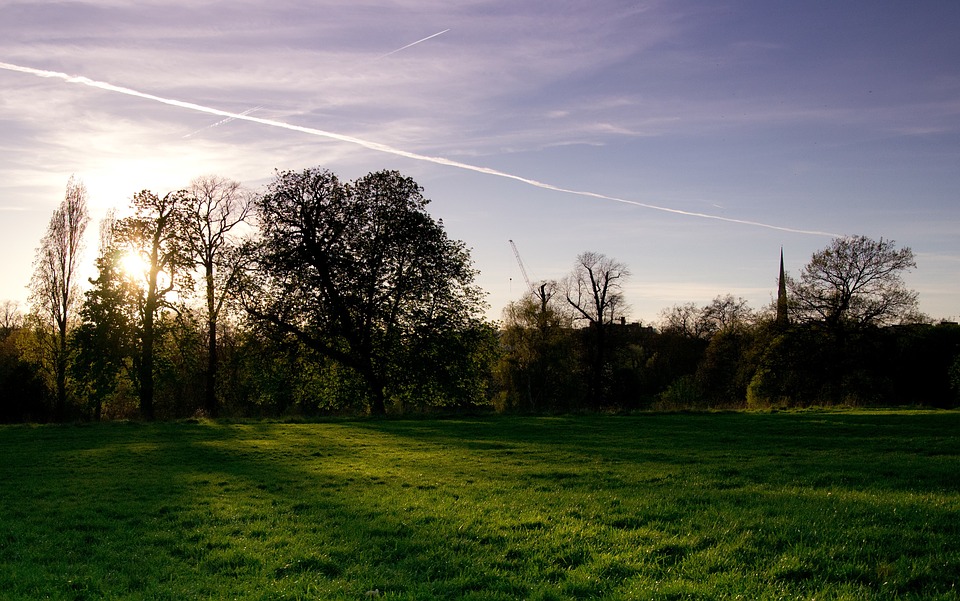
Originally the gardens were intended only for the walks of the nobility, but in 1728 they were made available to all decently dressed citizens, and later the gardens became one of the favorite places for walks with children. It was here that the interesting adventures of the fairy tale character Peter Pan unfolded, whose monument was erected in 1912.
The secret garden is hidden by a high hedge. Approaching the entrance, you can see the garden laid out on the request of King Edward VII in the Old Dutch style with a variety of flower beds and even a palm tree, and in the center of the garden – a rectangular pool. True, entry to the garden is forbidden to anyone except members of the royal family, but something can be seen from behind a wall of shrubs.
From Hyde Park, the gardens are separated by the artificial lake Serpentine, near which you can always see a lot of birds – ducks and swans – as well as a complex of Italian fountains. They consist of four small ponds, in the center of which is a fountain. Everything is lined with white marble and was a gift from Prince Albert to his wife, Queen Victoria – the prince himself was fond of developing park design.
The reciprocal gift, albeit posthumous, to Victoria Albert is located at the southern end of the park and features a 60-metre Gothic-style Memorial, erected in memory of the queen’s beloved husband, who died at the age of 42. The prince’s golden statue is framed by a memorial depicting his victories and achievements. The memorial is exceptionally impressive in its abundance of elaborate detail and overall complexity of design.
By the mid-nineteenth century, Kensington Palace had handed over its function as the royal residence to Buckingham Palace and with it, the gardens ceased to be the focus of the monarchs. They were not substantially reconstructed until 1860, when the Italian Fountains were created, and in 1909, when the Secret Garden appeared.
In the gardens is an important cultural site in London – the Serpentine Art Gallery. It was opened in 1970, and over the years it has exhibited the works of more than two thousand famous artists. In front of the gallery every year grows original temporary pavilions, which are developed each time by new architects. Admission to the gallery is free.
Kensington Gardens is full of statues and sculptures. There are monuments to Cecil Rhodes, the founder of the African state of Rhodesia, a monument to the inventor of the smallpox vaccine Edward Jenner, and a monument to the African explorer John Speke.
Children will love visiting Kensington Gardens because of the abundance of sites of interest to them and, in particular, the huge playground set up by Princess Diana. This playground is made in the form of a pirate ship with Indian teepees and piles of sand around it. In addition, next to this complex is the “elven oak” – the remains of the trunk of an almost thousand-year-old tree, from the folds of the bark of which the figures of fantastic creatures look out. Of course, you can’t touch them, as the oak is surrounded by a lattice fence.
Kensington Gardens is always full of people walking, athletes, runners and cyclists, as well as dog walkers who are allowed to walk their dogs there.
Most of the trees in the park are tall sprawling elms, oaks, and sycamores. Given the fairly mild English climate, green grass grows here almost year round.
